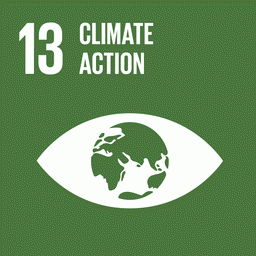The new edition of the newsletter Um Grau e Meio (1.5 degrees Celsius) talks about the forest carbon market and the maintenance of forests in the midst of the climate finance debate.
In an interview, IPAM Public Policy Director Gabriela Savian explains how REDD+ works and the transience of this mechanism.
Sign up to receive IPAM’s newsletter free by email.
Adopted in 2009 by the UNFCCC (United Nations Framework Convention on Climate), REDD+ provides for compensation for reduced emissions from deforestation and forest degradation in developing countries.

IPAM’s Director of Public Policy, Gabriela Savian (IPAM Collection)
What is the outlook for the carbon market today?
The carbon market is now a consolidated financial mechanism for offsetting the efforts of public policies for command and control, for maintaining forests and for promoting sustainable production, as fundamental strategies for reducing greenhouse gas emissions.
It also complements measures taken by corporations, since they must internalize emission reduction strategies in their production chains. It is an important part of the overall climate finance scenario. However, it is curious that it is treated as the main agenda, which it is not.
In Brazil’s case, the public budget invested in actions to reduce deforestation and degradation, and fundraising alone, should be much greater. And this has to be directed towards implementing strong actions for climate justice in terms of adaptation as well.
Has the SBCE brought progress in this regard?
We took a leap forward with the SBCE, because it consolidated the concept of jurisdictional programs and jurisdictional projects beyond private projects.
The SBCE provides a legal framework for projects in quilombo areas, indigenous lands and settlements, but says that the safeguards will have to be followed, those defined by the National REDD+ Commission.
Is there a definition for the allocation of REDD+ resources?
Within the framework of the United Nations, there are components that establish REDD+. According to the Warsaw Framework, the country or sub-national jurisdiction needs to have an emissions reduction strategy and guaranteed safeguards, looking at the Cancun Safeguards.
In addition, there needs to be a baseline from which the emissions reduction will be quantified, and robust monitoring, known as MRV (Measurement, Reporting and Verification), which confirms the reduction achieved and gives integrity to the carbon credits for the market.
Because of these factors, there is a presumed need to apply resources to more actions to reduce deforestation and degradation, to ensure that reduced deforestation rates are maintained and to avoid reversal.
Command and control does this, but the transition to sustainable production systems and other economic incentives, such as payment for environmental services generated from conservation, are strategic for keeping emissions low.
How does IPAM contribute to the agenda?
IPAM supports the states, in technical terms, to create a robust MRV that is internalized by the state. We’ve been working a lot on the degradation component, which was quite challenging two years ago. We have also contributed to the Cerrado component, with data on the forest formations in this biome.
Another front is the safeguards working group within the National REDD+ Commission. There, we discuss safeguards guidelines for jurisdictional programs and projects. It’s a very important space for social participation from different sectors.
In short, IPAM works to give robustness, in terms of public policy, with support for sub-national states to comply with the eligibility criteria in the REDD+ high integrity standards.
What is the future of the carbon market?
The carbon market is complementary and transitory because it presupposes that emissions reductions occur in a concrete and sustained way over time. Therefore, we need permanent emission reduction actions and the transition to other modes of production.
Speaking of REDD+, which is part of the carbon market, it helps to reduce deforestation. And the plus sign in the acronym is precisely to generate benefits from the conservation of ecosystems and the removal of carbon from the atmosphere. Therefore, it creates the conditions for economic transformation, so that an economy based on the conservation of forest areas can be established.
This is the long-term future. But in the short term, we can see that we are moving from a global market perspective based on carbon credits generated locally in projects, to programs that have a larger scale and permanence for reducing emissions and for economic transformation.

